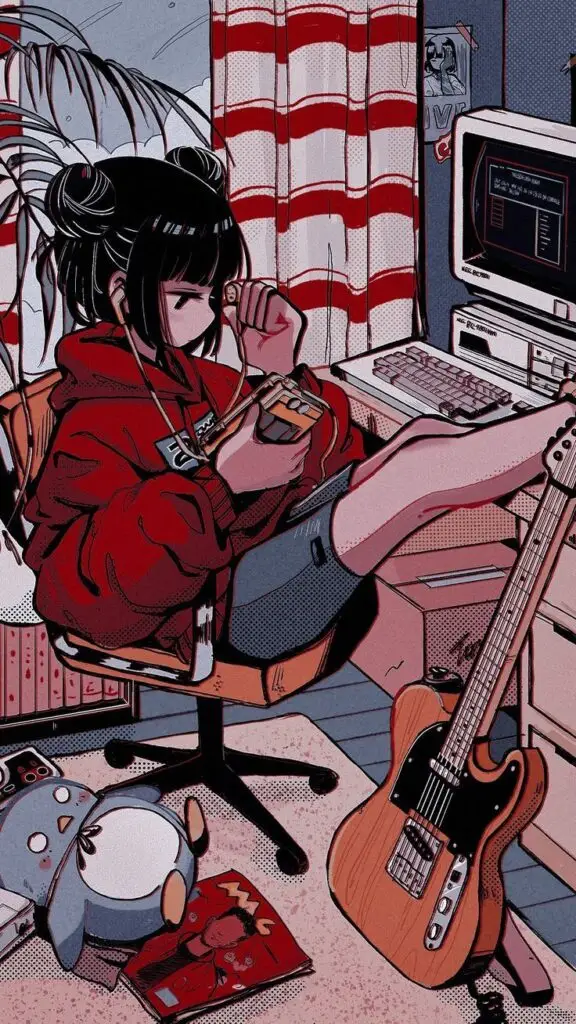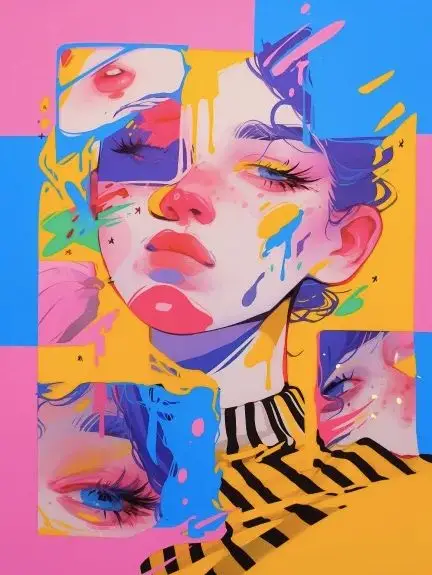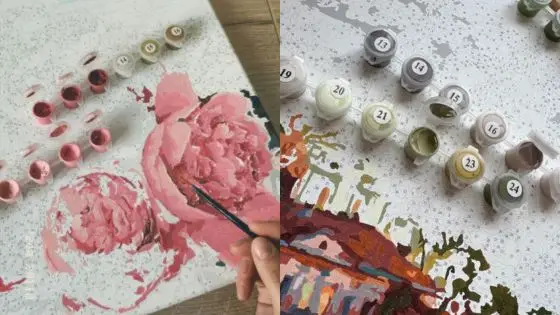Digital art has transformed the creative landscape, bringing new possibilities to artists worldwide. Digital paintings combines traditional artistic skills with modern technology, allowing artists to create stunning artwork directly on computers and tablets. The tools and techniques have evolved rapidly, making it easier than ever for both beginners and professionals to explore this medium.

Artists can experiment with countless brushes, colors, and effects without the constraints of physical materials. Digital painting removes many traditional barriers, like the cost of supplies and studio space, while offering powerful features like layers, undo options, and seamless color mixing.


The flexibility of digital painting opens doors for various creative pursuits, from concept art and illustration to animation and game design. Artists can work faster, make adjustments easily, and share their work instantly with a global audience.
Key Takeaways
- Digital painting merges artistic fundamentals with innovative technology to create professional artwork
- Digital tools provide endless creative possibilities with features like layers, brushes, and instant corrections
- Artists can learn and master digital painting through structured practice and online resources
Fundamentals of Digital Painting

Digital painting combines traditional art principles with modern technology to create artwork on computers and tablets. Artists use specialized software and tools to simulate brushes, colors, and textures.
Defining Digital Art and Painting
Digital painting takes place on devices with pressure-sensitive screens or tablets. Artists draw directly onto these surfaces using a stylus that mimics traditional brushes and pencils.
The process requires specific software like Photoshop, Procreate, or Krita. These programs offer layers, brush customization, and color palettes.
Digital artists work with pixels instead of physical paint. They can undo mistakes, duplicate elements, and adjust colors instantly.
Many professionals use drawing tablets connected to computers. Some prefer all-in-one devices like the iPad Pro with built-in screens.
Key Advantages and Disadvantages
Digital painting saves space and money since artists don’t need physical supplies. They can experiment freely without wasting materials.


Artists can share their work instantly online and make quick revisions for clients. Digital tools offer features like symmetry guides and perspective grids.
Storage takes up no physical space – thousands of artworks fit on one hard drive.
Some drawbacks exist. Equipment costs can be high at first. Artists need to learn complex software interfaces.
Technical issues like file corruption or device failures can affect work. Some artists miss the tactile feel of traditional media.
AI tools now assist with certain aspects of digital painting, though many artists choose to work without them.
Essential Tools and Software

Digital artists need specific software programs and hardware devices to create professional artwork. Quality tools make a significant difference in the creative process and final results.
Choosing the Right Software
Adobe Photoshop leads the digital art software market with powerful painting tools and layer management. Many professionals use it alongside Adobe Illustrator for vector artwork.
Clip Studio Paint offers specialized features for illustrations and comics at a lower price point than Adobe products. Its brush engine and stabilization tools help create smooth lines.
Procreate dominates iPad-based digital art with an intuitive interface and responsive brushes. The app costs a one-time fee with no subscription.
Krita provides a free, open-source option with professional-grade features. Its brush customization rivals paid software.
Hardware for Digital Artists


Graphics tablets are essential tools for digital painting. Wacom remains the industry standard with pressure-sensitive devices in various sizes and price points.
The iPad Pro with Apple Pencil serves as both tablet and canvas. Its portability makes it popular among artists who work on the go.
Screen tablets like the Huion Kamvas and XP-Pen products offer direct hand-eye coordination at lower prices than Wacom Cintiqs.
A computer with at least 16GB RAM and a dedicated graphics card helps run art software smoothly. Extra storage space keeps large art files organized.
Techniques in Digital Painting

Digital painting combines artistic skill with technological tools to create stunning artwork. Artists use specialized software like Photoshop, Procreate, or Krita along with digital tablets to paint directly on screen.
Mastering Layers and Transparency
Layers form the foundation of digital painting. Artists stack multiple layers like transparent sheets to build complex images.


The base layer typically contains the initial sketch or outline. Artists can lock this layer to prevent accidental changes while working on other elements.
Each new layer adds details, colors, or textures. The opacity settings let artists adjust how much each layer shows through to create depth and dimension.
Layer blending modes create unique effects by controlling how colors interact between layers. Multiply darkens while Screen lightens, giving artists precise control over their work.
Texture and Brushwork
Digital brushes mimic traditional art tools like pencils, paintbrushes, and markers. Artists can adjust brush size, flow, and pressure sensitivity to achieve different effects.
Custom brushes add unique textures that would be difficult to create by hand. These might include fur, fabric, or natural elements like leaves and grass.
Texture overlays enhance surface details. Artists can apply these as separate layers and adjust their intensity to create realistic materials like metal, wood, or stone.
Brush stroke direction helps guide the viewer’s eye and adds movement to the piece. Artists vary their stroke length and direction to create visual interest.
Color and Light
Color palettes define the mood of digital paintings. Artists often start by selecting 3-5 main colors that work together harmoniously.


Light sources determine where highlights and shadows fall. Digital painters can adjust brightness and contrast on separate layers to enhance depth.
Color adjustment tools let artists fine-tune hue, saturation, and value. This helps maintain color consistency across the entire piece.
Composition Principles
The Rule of Thirds divides the canvas into a 3×3 grid. Placing key elements along these lines creates balanced compositions.
Leading lines guide viewers through the artwork. Artists use objects, colors, or brush strokes to direct attention to focal points.


Negative space balances detailed areas. This gives the eyes rest points and prevents the composition from feeling overcrowded.
Scale and proportion help establish relationships between objects. Artists can easily resize and reposition elements to achieve perfect balance.
Bridging Traditional and Digital Techniques

Digital art tools allow artists to blend classic painting methods with modern technology, creating unique works that combine the best of both approaches.
Incorporating Traditional Media Aesthetics
Digital brushes now accurately mimic oil paint textures and watercolor effects. Artists use pressure-sensitive tablets to control paint flow and brush strokes just like traditional media.
Digital watercolor tools create realistic paint spreading and paper texture effects. The colors blend and flow naturally, similar to physical acuarela techniques.
Oil paint simulation tools replicate thick impasto textures and paint mixing. Artists can build up layers of virtual paint that interact like real oil paints on canvas.
Hybrid Art Forms
Many artists start with traditional sketches or paintings before scanning them into digital formats. This allows for further enhancement while keeping the original hand-drawn feel.
Digital tools enable artists to combine oil painting techniques with photographic elements and digital effects. The results blend realistic textures with imaginative digital elements.
Some artists print their digital works on canvas or watercolor paper, then add physical paint and textures on top. This creates mixed-media pieces that exist in both digital and physical forms.
Advanced stylus technology lets artists feel resistance and texture while painting digitally, similar to working with real brushes and canvas.
Developing as a Digital Artist

Digital artists need clear goals and consistent practice to build their skills and reach a professional level. A strong portfolio and active participation in art communities help artists showcase their work and grow their careers.
Building a Digital Portfolio
A digital portfolio demonstrates an artist’s best work and unique style. Artists should select 10-15 pieces that highlight their technical abilities and creative range.
Professional artists update their portfolios every 3-6 months with new work. They remove older pieces that no longer represent their current skill level.
High-quality images and proper formatting make portfolios stand out. Artists should include detailed descriptions of their creative process and the tools they used.
The Role of Community and Networking
Online art communities provide valuable feedback and opportunities for growth. Artists can join platforms like ArtStation, DeviantArt, and Instagram to connect with peers.
Regular participation in art challenges and competitions helps artists stay motivated and visible. These events often lead to job opportunities and collaborations.
Many digital artists attend virtual workshops and conferences to learn new techniques. They also join Discord servers and Facebook groups focused on digital art to exchange tips and industry news.
Mentorship relationships benefit both new and experienced artists. Established professionals can guide beginners while staying connected to fresh perspectives in the field.
- 170shares
- Facebook0
- Pinterest169
- Twitter1


